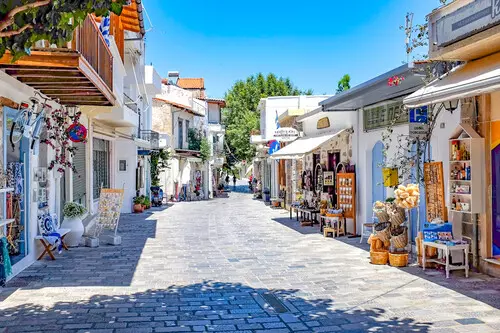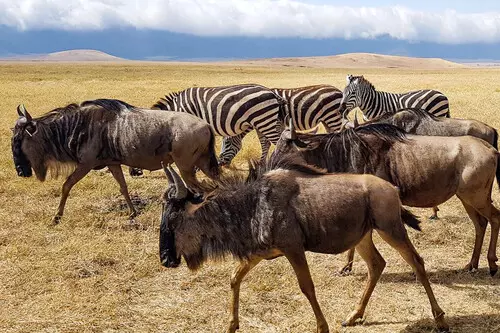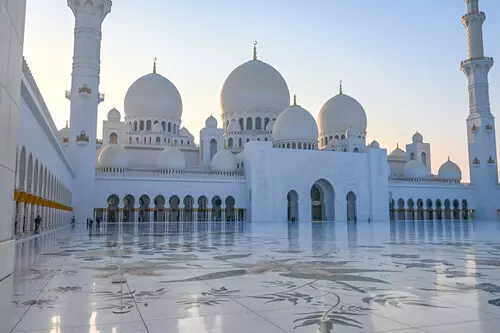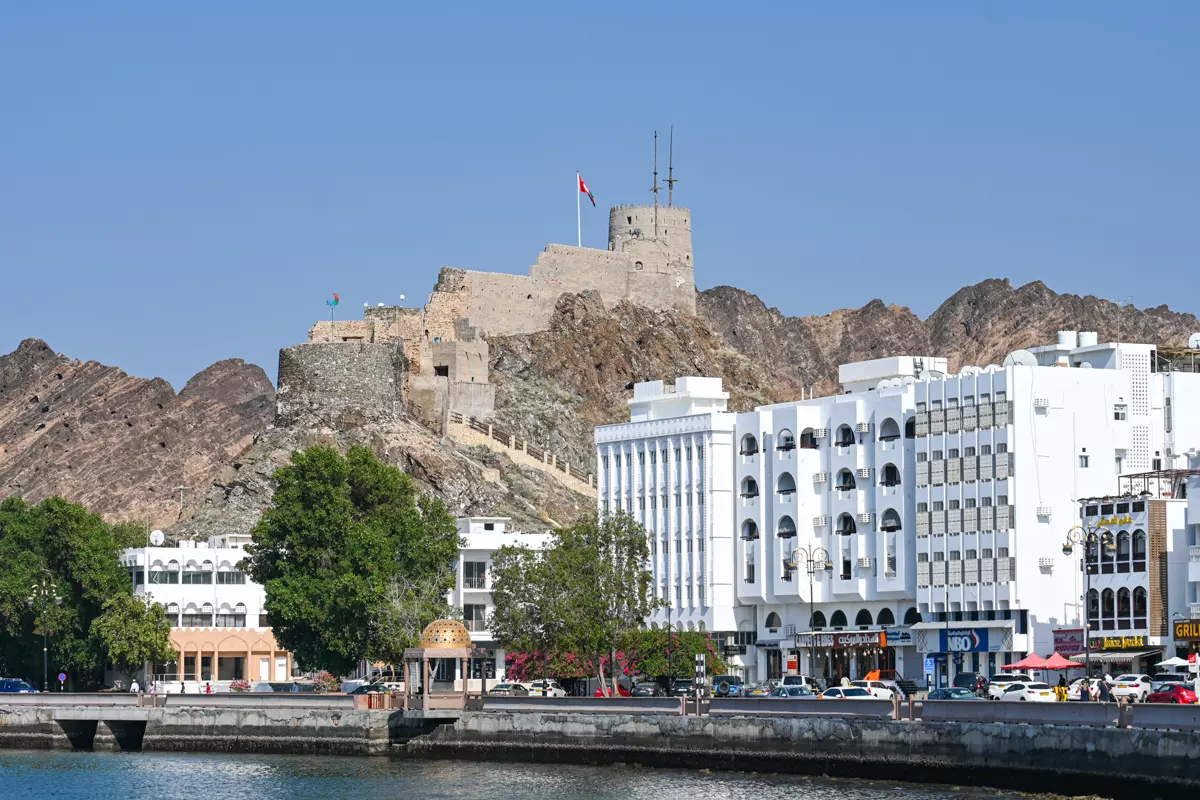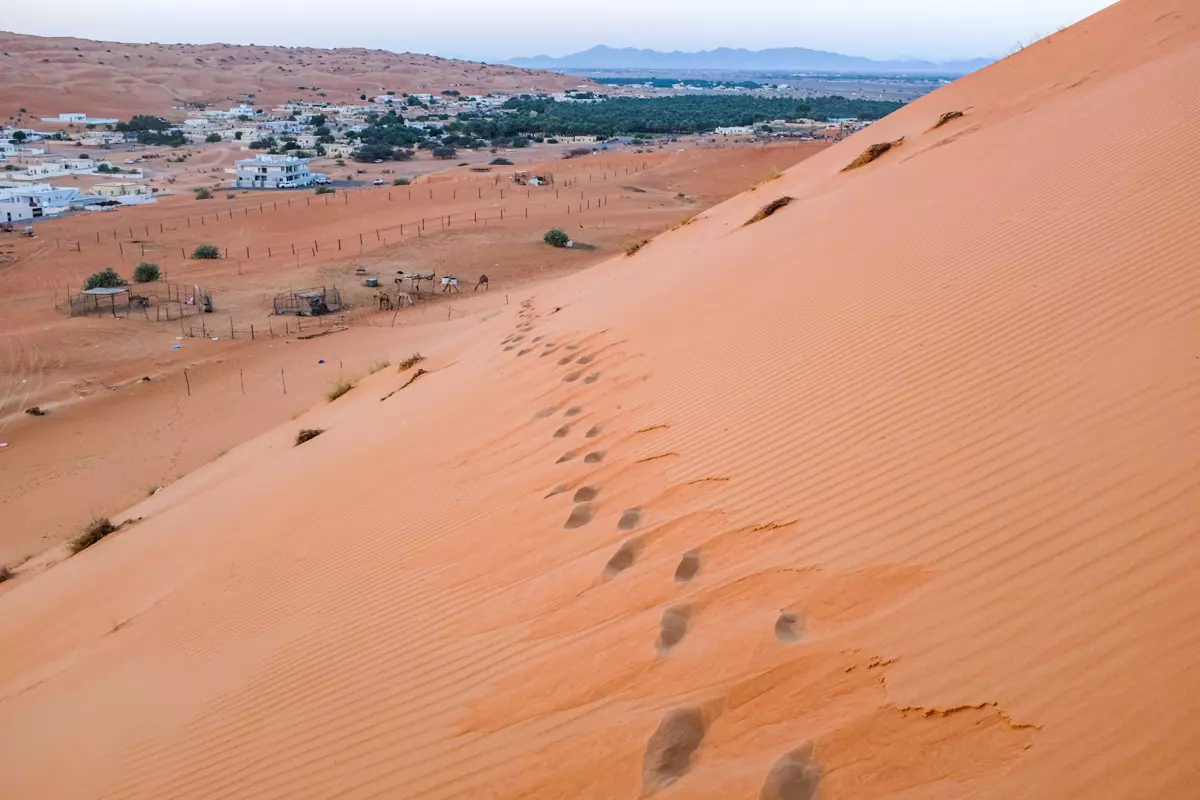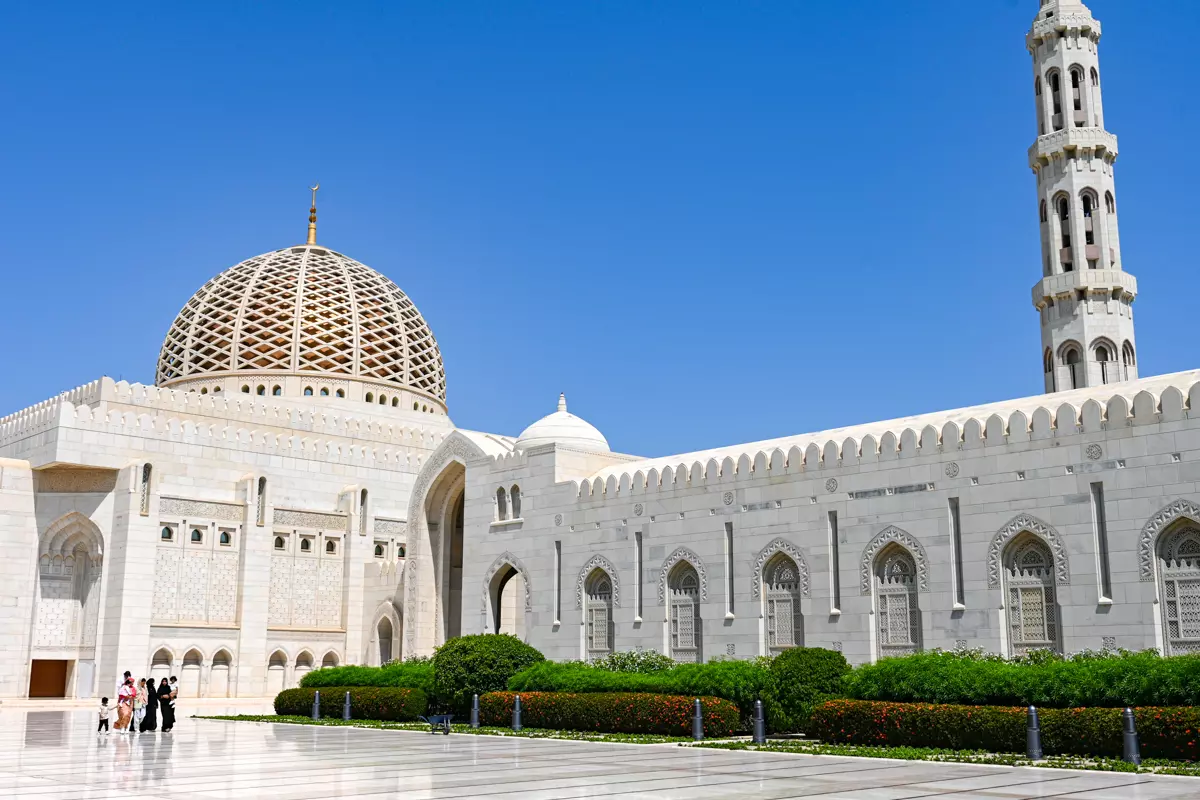15 Best Things To Do In Oman
Oman is nestled between the mountains and the sea – a combination that immediately sets the mood for a trip that will offer a wide range of experiences. Breathtaking beaches that exude serenity contrast with the bustling city streets, while majestic mountains counterbalance modest villages, and ancient charm meets the modernity of the modern world.
Wandering around the big cities, you would never think that there is a seemingly endless desert right nearby. That’s the impression Oman made on me – a country that was inviting me to get a taste of its hospitality, cultural diversity, unique traditions, and history. Here are a handful of things to see and do in Oman.
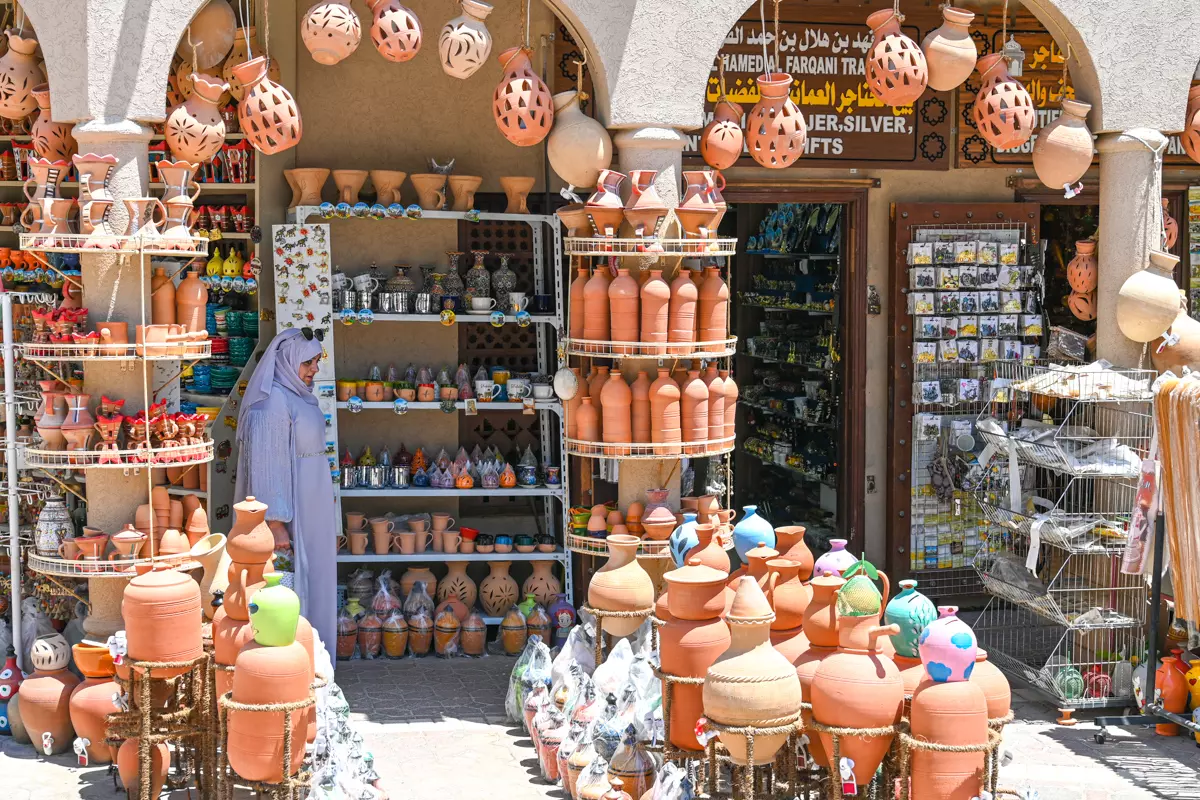
Things To Do In Oman
Muscat

Muscat, the capital of Oman, is very welcoming and offers many interesting places to visit. One of its most beautiful and exquisite buildings is the Sultan Qaboos Grand Mosque, which reflects traditional architectural solutions while also radiating modernity. This is the third largest mosque in the world and an undoubted masterpiece of Islamic architecture.
While in Muscat, make sure to see Al Alam Palace. Some travelers feel disappointed that the palace isn’t open to the public, but I still found its arches, colors, and grand setting impressive.
Also worth seeing are the Royal Opera House Muscat (which offers tours), the National Museum of Oman, and the Bait Al Zubair Museum. Mutrah Souq is another place I enjoyed, and it has preserved its ancient charm. This vibrant market is full of colors and smells, offering a chance to immerse yourself in the lively, mesmerizing bustle. And if you want to relax after an eventful day in the capital, take a lovely evening walk along the promenade.
Nizwa

Nizwa is one of the oldest cities in Oman and attracts many travelers. Once the capital of the country, it thrived as a center of religion, trade, science, and art. Today, the city feels smaller and quieter, but the grandeur of its old town still reflects its historic importance.
The bustling market is one of Nizwa’s highlights, and almost every visitor passes through it. You can browse stalls full of local handicrafts—silverware, pottery, handmade carpets—as well as colorful, aromatic spices. I still remember the scent of frankincense lingering in the air long after I left the market.
If you want a truly authentic experience, wake up early on Friday and head to the goat market. Farmers bring their animals, bargain loudly, and circle the market with potential buyers. Watching this centuries-old tradition unfold gave me a sense of stepping back in time and seeing a slice of Omani life that hasn’t changed much in generations.
Accommodation: Here are all the available hotel options in Nizwa.
Nizwa Fort

One of the most unique things to do in Oman is to walk around the Nizwa Fort. This is a very popular attraction in Nizwa. The fort, built in the 17th century, is famous for its tower that rises 40 meters high. Be sure to take in the surroundings from this tower. The views of the date plantations and the mountains looming in the distance are absolutely breathtaking.
Inside the fort, you can explore historical artifacts such as tools and jewelry. On a guided tour, you will be introduced to Omani history, weaponry, crafts, and unique ancient technologies, like the production of natural dyes. You’ll also see demonstrations of metalwork, jewelry making, pottery, and more.
Also read: Exploring Nizwa Fort – A Complete Guide
Bahla Fort

Bahla Fort is another must-visit fort in Oman. It is listed as a UNESCO World Heritage Site. It is believed that Bahla Fort was built between the 12th and 15th centuries. The construction followed traditional methods, using local building materials. The fort complex contains numerous structures, including residential houses, mosques, and other buildings that reflect the local way of life. You can take a guided tour, exploring the fort’s rooms and climbing its towers. The fort is surrounded by many legends, telling tales of magic, jinn, and other fascinating stories related to its construction.
Did you know that pottery-making traditions are highly regarded in the Bahla region, with techniques passed down from generation to generation? After visiting the fort go to the Bahla market. There, you can meet local potters, get a closer look at the craft, see unique pottery pieces, and, if you wish, purchase some of these items.
Masirah Island
The largest island in Oman is Masirah Island. It is home to 12 villages and several hotels, if you wish to stay longer. This island is a great choice for travelers seeking diverse experiences – you can enjoy the tranquility of the beaches, learn about the island’s history, and face the challenges of the wild. The island is particularly popular with swimming enthusiasts and attracts many divers, as there are numerous shipwrecks along its shores. It also attracts kite surfers and surfing enthusiasts.
Another exciting experience is turtle watching. Every year, thousands of turtles come ashore to lay eggs, including some rare species like the green turtle. The best time to see female turtles laying eggs is during the summer months. A convenient way to reach the island is by ferry, with the journey taking about an hour and a half.
Jabreen Castle

While Oman has many castles with long histories, Jabreen Castle stands out for its beauty and grandeur. The castle was built in the late 17th century and differs from other castles in the country because it was built during a period of peace. Furthermore, it served as an educational center at the time. Therefore, it does not resemble a fortress but rather looks more like a palace with reception halls, a library, and other specialized rooms. One of the most beautiful rooms is the Sun and Moon room, notable for the number of windows, their arrangement, and other features.
Today, the exhibits in the castle tell visitors about Oman’s history from the 17th and 18th centuries. The architecture of the castle reveals many traditional Omani elements, such as decorated windows and carvings on the ceilings and walls, often transforming into true works of art. While strolling through the castle, don’t miss the chance to enjoy the panoramic views from one of the observation decks or towers.
Wahiba Sands

Visiting Wahiba Sands is easily one of the most unforgettable things to do in Oman. This vast desert stretches across the country, with reddish dunes that tower up to 200 meters in some places and cover more than 12,000 square kilometers.
You can explore the desert on camelback or join an off-road adventure. Along the way, you’ll meet Bedouins who still live here, and getting even a glimpse of their daily life feels like stepping into another world.
The desert invites you to try experiences you won’t find anywhere else. You can go dune bashing, sandboarding, sleeping in a tent camp, or simply sitting in silence as the sun sets over endless dunes. When I spent a night here, I’ll never forget sipping hot tea by the campfire and then looking up at the starry night sky.
Bimmah Sinkhole

Bimmah Sinkhole is another unique natural landmark you shouldn’t miss while visiting the Sultanate of Oman. Locals like to joke that it appeared when a piece of the Moon fell to Earth. Geologists, on the other hand, explain that the water-filled hole formed after the roof of an underground limestone cave collapsed.
The sinkhole’s water shows a striking mix of green and blue hues. Sitting close to the coastline, it blends fresh water with seawater. Visitors can swim here, and the site offers basic amenities such as steps into the water, showers, and changing rooms.
Discover: All Bimmah Sinkhole tours in one place.
Jebel Shams Mountains

Many mountain lovers travel to Oman specifically for Jebel Shams, the highest mountain in the country, located in the northeast, with a peak reaching 3,075 meters. Interestingly, the name translates to Mountain of the Sun.
The northern slope of the mountain is known as a canyon, often called the Grand Canyon of Arabia, one of the deepest in the world, offering breathtaking views of the surrounding area. Several viewpoints along the canyon’s edge offer indescribable scenery, without a doubt making it one of the best experiences of your trip to Oman.
You can camp here, stargaze at night, or enjoy various mountain hikes. Additionally, there are numerous hiking options available to suit different levels of experience, ensuring every traveler finds a suitable adventure.
Wadi Shab

When creating your list of places to visit in Oman, you’ll quickly notice that the country is rich in wadis. Wadis are dry valleys in the Arabian desert that periodically turn into rivers, clear water pools, and enchanting green oases, especially after heavy rains.
Wadi Shab is a gorge flanked by cliffs on both sides, and the only way to reach it is by crossing the riverbed, so be prepared for an adventure. Walking along the narrow trails of Wadi Shab, surrounded by rocks and palm trees, was an exhilarating experience for me!
At the end of the gorge, I came upon several natural, emerald-colored pools and a waterfall inside a cave where you can swim. Swimming in the cave is truly a magical experience, but avoid going if it has rained the day before.
Tip: To get to Wadi Shab, you will first need to take a boat, which operates daily from 8 a.m. to 5 p.m. The boat can easily be found under a large bridge near the parking lot.
Please note that depending on the season, there may be a significant amount of water on the trail. Therefore, wear footwear suitable for walking through water. Do not wear sandals, as the slippery rocks make them unsafe.
Discover: Wadi Shab & Bimmah Sinkhole Full-Day Tour.
Misfat al Abriyyin

Another things to do in Oman is to visit Misfat al Abriyyin. This village, which feels like a journey back in time, left a lasting impression on me. The centuries-old houses, still inhabited today, stand peacefully in Misfat, a village nestled in a gorge. The homes have fully preserved their traditional architecture, and the residents have maintained their way of life.
The houses line the mountain slopes, and another amazing experience is the chance to view them from above after climbing the mountain. The village is surrounded by plantations of dates, bananas, and pomegranates, which add an exotic touch to this ancient heritage, contrasting with the maze of mud-brick homes.
Interestingly, the village still uses an ancient irrigation system, thousands of years old, which channels mountain water for garden irrigation and household use. Misfat Al Abriyyin also offers several scenic hiking trails, where you can enjoy breathtaking views of the mountains and valleys.
Tip: Misfat al Abriyyin is a small pedestrian-only village, so leave your car in the designated visitor parking lot.
Jebel Akhdar Mountains

The highest peak of this mountain range rises to 3,009 meters. Jabal Akhdar means Green Mountain, and the name makes perfect sense once you climb higher and see terraced gardens bursting with peach, apricot, pomegranate, and grape plantations. And then there are the roses—thousands of them. Locals turn the petals into rose water, which they use in perfumes and sweets. I had a chance to watch the process: farmers gathering fresh petals in cloths and carrying them to distillation rooms where the fragrance fills the air.
Even if you’re not into hiking, the trails here are worth exploring. They pass through centuries-old villages where you can glimpse daily life and traditions. Don’t miss Al Aqar, Al Ayn, and Ash Sharayjah. Choose a route that links all three or at least two of them. Many paths run along terraced farms with ancient irrigation channels. If you visit in March or April, you’ll also see the roses in full bloom.
Discover: Jebel Akhdar Mountains tours available here.
Salalah
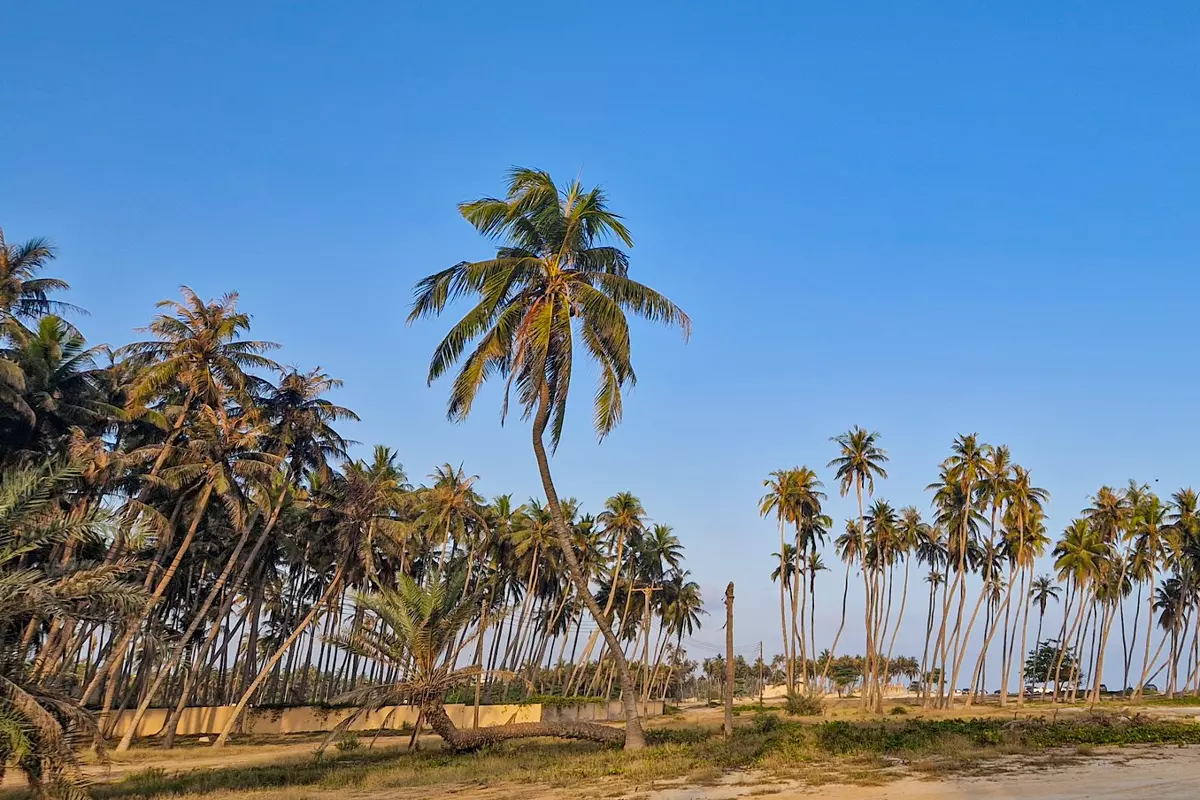
Salalah is the second-largest city in Oman, also known by its unofficial name, the Perfume Capital of Arabia. The city is particularly famous for frankincense, and its beaches are lined with palm trees, inviting visitors to swim in the clear turquoise waters.
Travelers with different interests will find plenty to see and do in the city. Those seeking cultural experiences can visit the Sultan Qaboos Palace and the ruins of the Queen of Sheba’s palace. The captivating, authentic old town of Salalah is also worth exploring. Those who enjoy more active leisure can choose diving, while wildlife enthusiasts can opt for birdwatching.
A significant number of tourists are drawn to the region’s stunning natural scenery, featuring lush greenery, mountains, and waterfalls. However, this natural beauty fully reveals itself only during the monsoon season from June to August.
Accommodation: Here are all your hotel options in Salalah.
Oman Across Ages Museum

One of the most important and best things to do in Oman is to visit the Oman Across Ages Museum. Located 17 kilometers outside Nizwa, this museum is one of the most modern and newest, but it has already become a popular tourist destination. The museum opened its doors to visitors in 2023. It’s a great place to learn about Oman’s history, from ancient times to the present day.
The museum’s exhibits cover various historical periods and cultural aspects, telling stories about architecture, art, daily life, and more. It’s like a journey through time. The museum also makes use of technology, offering numerous interactive exhibits that enhance this journey. Additionally, a wide range of educational programs is available.
Opening Hours: The museum is open to visitors from Saturday to Thursday, 9 a.m. to 5 p.m., and on Fridays from 1:30 p.m. to 7 p.m.
Musandam Peninsula
I like to call this area Oman’s hermit because the Musandam Peninsula sits apart from the rest of the country, cut off by the United Arab Emirates. The region has few inhabitants but an incredible variety of wildlife. Along the coastline, you’ll find pristine white sand beaches, while dramatic mountain peaks rise straight out of the water.
Dolphins often swim near the shore, and spotting them feels like a real privilege since they don’t always appear. The fjords that cut into the coastline add even more character to Musandam. The best way to experience this unique landscape is from the water on a boat tour.
Although I travel to the UAE quite often, I’ve never managed to reach Musandam myself. It’s high on my list, and every time I hear travelers talk about their trips there, I feel even more tempted to finally plan the detour.
Accommodation: Here are all your hotel options in Musandam.
Oman Tours & Activities
Tourists are also drawn to Oman for its wide range of activities. You can try experiences such as desert excursions, camel rides, desert safaris on quad bikes, or boat trips on traditional or modern vessels. I also highly recommend taking advantage of the unique opportunity to go snorkeling in the waters of the Arabian Sea, around the Daymaniyat Islands. It’s one of the most unforgettable things to do in Oman.
How To Get To Oman
Most travelers reach Oman by flying into Muscat International Airport. The national carrier, Oman Air, offers a wide range of international routes across Europe, Asia, and America. The country also has a low-cost airline, Salam Air, based at Muscat International Airport. This airline flies to more than 30 destinations in the Middle East, Asia, and Europe. Additionally, many other major international airlines, such as Lufthansa, Turkish Airlines, Etihad, Qatar Airways, and IndiGo, fly into Muscat Airport, making it easy to reach Oman from any part of the world.
Climate In Oman
Oman generally has a very hot and dry climate year-round, except for the Dhofar region, which enjoys a mild monsoon climate with occasional cool winds from the Indian Ocean. The exception is in the mountains, where temperatures can drop significantly, especially in winter. The hottest months in the central and northern regions are June, July, and August. However, during this period, the Dhofar region is affected by the southwest monsoons, bringing much heavier rainfall and creating temporary rivers, also known as wadis.
In the Salalah region, dark clouds often cover the sky in July and August, although temperatures remain high. These months are the best time to explore the southern part of Oman. During this time, tropical forests in the Salalah region turn lush green, creating an unforgettable atmosphere.
In Muscat, June is the hottest month, while July and August tend to be cloudy, with the southwest monsoons slightly lowering daytime temperatures. In June, the average temperature is around 40°C, in July about 38°C, and in August it drops to around 36°C. For travel in the Muscat region and the central parts of the country, I recommend planning your trip between November and February.
Average Temperature
Places To Stay In Oman
The range of hotels and resorts in Oman is quite broad. You can stay in budget or luxury hotels, guesthouses in the mountains, or desert camps. I have listed a few hotel options for you in larger cities and more interesting locations across the country, catering to different budgets, so I hope you’ll find the best accommodation option.
Budget Hotels
- Old Town Hotel is located in the very center of Nizwa, making it easy to reach the fort and the market. Guests can stay in spacious rooms with air conditioning, flat-screen TVs, and free Wi-Fi.
- Muscat Express Hotel is a highly-rated hotel located near one of Muscat’s largest shopping centers, Oman Avenues. Rooms feature air conditioning, desks, safes, flat-screen TVs, and bathrooms with showers.
Mid-Range Hotels
- IntercityHotel Muscat offers an outdoor pool, free parking, a gym, and a shared lounge. The spacious rooms have air conditioning, flat-screen TVs with satellite channels, soundproof walls, minibars, and bathrooms.
- Desert Nights Resort – A unique resort located in the Wahiba Desert. Guests can enjoy a variety of free and paid activities in the desert.
- Al Misfah Hospitality Inn – A hotel decorated in traditional Omani style, located in the village of Misfat al Abriyyin. Breakfast and dinner are included in the booking, making it a great place to sample authentic local dishes.
Luxury Hotels
- Chedi Muscat offers 162 rooms, all equipped with various amenities. The resort also features lounges, a gym, several restaurants, a luxury spa, as well as indoor and outdoor pools. For those who love extravagance and exclusive relaxation, this accommodation will certainly appeal.
- The St Regis Al Mouj Muscat Resort is located by the beach on the outskirts of Oman’s capital. The resort welcomes visitors with top-class rooms, various services, and warm hospitality. Guests can swim in outdoor pools, visit the spa and wellness center, work out in the gym, and enjoy international dishes at the hotel’s restaurant.
- Alila Jabal Akhdar – A luxury resort located 2,000 meters above sea level, offering outdoor and indoor pools, a gym, and a spa and wellness center. Guests can stay in luxury villas with private pools and suites with balconies.
How To Travel Around Oman
To see more and get a better feel for Oman’s nature and culture, it’s best to rent a car. This is the simplest and most convenient way to travel. By renting a car, you have the freedom to travel whenever you want, without having to adjust to public transport or tour schedules. You can also bring as much luggage as fits in the car’s trunk. During your journey, you’ll be able to reach not only wild beaches but also small local towns rich in culture, as well as impressive natural landmarks.
Cars can be rented from international chains like Avis and Thrifty or from local companies. I usually use Discover Cars because they offer some of the lowest prices online and provide full coverage insurance.
Faqs About Things To Do In Oman
Although Oman is a large country, most of the key attractions are located in the northern and central parts. If you want to see all the major sights and don’t plan on extensive mountain trekking, I believe 9–10 days is enough for the trip. However, if you also plan to visit Salalah, you should extend your journey to 15–17 days in Oman.
Women will need to wear modest clothing. When visiting a mosque, it is also recommended to cover their heads with a scarf. You won’t be able to purchase alcohol in Oman, but hotels are well stocked with it.
Yes, if you are traveling independently, renting a car is essential for visiting the main attractions in Oman.
If you plan to travel around the Muscat region and the central part of the country, I recommend visiting Oman between November and February. If you’re heading to the Salalah region, the best months to visit are July and August.
Oman is a very safe country, with almost no violent crime. Throughout my entire journey in this beautiful country, I felt very safe. It’s important to follow local customs and laws while traveling. Respecting the culture will lead to an unforgettable vacation.
Oman cuisine blends Arabic, Lebanese, Turkish, and Indian culinary traditions. While traveling, try Shawarma – grilled beef or chicken in flatbread. Don’t miss Ruz al mudhroub (rice with fried fish) and Muqalab (spiced meat).
The currency of Oman is the Omani rial (OMR). Money can be exchanged at all banks, exchange offices, and many hotels. You can find currency exchange ATMs in both banks and shopping centers.
The best souvenirs from Oman are dates or fragrant incense. You can also bring back silk scarves, silver jewelry, colorful pottery, or a brass and copper coffee pot, known in Arabic as Dallah.
Book your flight
For the best flight deals, I always rely on Skyscanner. Features like Multi-city and Explore Everywhere help me uncover incredible travel opportunities.
Rent a car
Discovercars is my top choice for comparing car rental prices for any road trip around the world. The booking experience is always smooth and easy.
Travel insurance
SafetyWing provides affordable travel medical insurance with global coverage, perfect for digital nomads and long-term travelers.
Book Tours & Attractions
Experiencing a destination to the fullest is easier with a well-planned itinerary. I use GetYourGuide for guided tours and Tiqets for quick access to museum and amusement park tickets.
Protect yourself online by VPN
No matter where I go, I always use NordVPN for secure browsing and to ensure I can access websites that might be blocked in certain countries.
Disclosure: I only suggest companies that I personally rely on. If you use the affiliate links in my posts to book services, I’ll earn a small commission, with no extra cost to you.
Here are the top things to do in Oman. Which activity is your favorite in this magical country?
Share on

Hi, I’m Evelina, a travel enthusiast who loves nature, peace, and authentic places. I cherish the freedom to explore and learn with each adventure, whether it’s hiking trails, stunning beaches, natural parks, unique architecture, or rich cultural heritage. I hope my experiences inspire you to embark on your own journeys!
